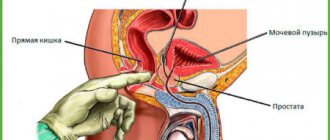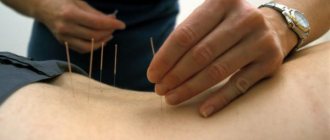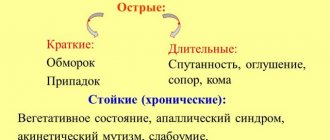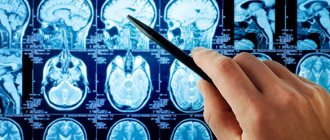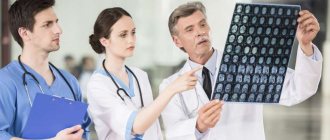Content:
- Transcranial therapy: what is the principle of the technique based on. 1.1. Transcranial neurostimulation: main advantages.
- Indications for transcranial electrical stimulation.
- Effects provided.
- Transcranial brain stimulation: contraindications.
- How does a TES therapy session work?
Transcranial brain stimulation has long been widely used in neurology for the treatment, rehabilitation and maintenance of quality of life in Parkinson's disease, mental disorders, after a stroke, and neuroinfections. Due to its high efficiency, safety and complex action, TES therapy is also successfully practiced in narcology to combat alcohol and drug addiction. At the same time, this physiotherapy procedure not only eliminates the craving for alcohol or psychoactive substances - the body is completely healed, cleansed and restored.
Main indications
Indications for use of the method:
- psychological diseases (chronic fatigue syndrome, depression, anxiety, anorexia);
- cardiopsychoneurosis;
- initial degree of hearing loss;
- toxicosis in pregnant women in the first trimester;
- allergic diseases (diathesis, hay fever);
- menopausal manifestations in women and men;
- parkinsonism;
- rehabilitation period after a cerebral stroke;
- immunodeficiency states;
- rehabilitation period in the treatment of drug or alcohol addiction;
- pain syndrome due to injuries;
- phantom pain.
Contraindications:
- acute pain syndrome;
- birth period;
- acute myocardial infarction;
- infectious and inflammatory diseases of the brain (encephalitis, meningitis);
- convulsive syndrome;
- the presence of pacemakers and artificial implants in the body;
- age up to 6 years.
Transcranial therapy: what is the principle of the technique based on
During the procedure, brain structures are activated that regulate the production of endogenous opioid peptides - a group of neurotransmitters that determine a person’s emotional state, the functioning of the immune, cardiovascular, nervous and, in part, endocrine systems. The impact is carried out with strictly defined, dosed impulses, which eliminates complications and ensures a positive result of TES of the brain after the first procedure.
Transcranial neurostimulation: main advantages
- Safety. The treatment does not cause any side effects; specialists at the Ugodie clinic select its duration individually, taking into account the severity of the addiction and the psychological state of the patient (propensity to relapse, general attitude towards the treatment process, etc.).
- Efficiency. One course of TES therapy includes up to 10 physical procedures, and the result of transcranial exposure lasts up to 12 weeks. To consolidate the achieved effect, it can be repeated at intervals of 2–3 months.
Complex impact. Transcranial electrical stimulation has a positive effect on both the psycho-emotional and physical condition of the patient. This allows you to reduce the dosage or completely abandon medications used for the conservative treatment of alcohol or drug addiction. In this way, you can avoid unnecessary stress on the liver, digestive tract, and kidneys affected by toxins.
At the Ugodie drug treatment clinic, we provide the opportunity to conduct transcranial procedures both in the hospital and on an outpatient basis. We provide all our clients with maximum comfort, strict adherence to confidentiality, and reasonable prices. We offer TES therapy as one of the stages of complex treatment of alcoholism or drug addiction, along with detoxification, coding, work with a psychologist, and rehabilitation.
Who is Cefali intended for?
Cefaly is intended for patients who suffer from migraines when it is necessary to reduce their medication intake.
- The Migraine Attack Treatment Program is designed to treat painful migraine attacks.
- The prevention program is intended for patients with migraine who suffer from frequent migraine attacks and chronic headaches associated with mental fatigue and neck tension and require migraine prevention in order to reduce the frequency of attacks.
Indications for transcranial electrical stimulation
- Treatment for alcoholism.
- Fighting drug addiction. By the way, while addiction to alcohol can be to some extent dealt with using medication (Disulfiram, Esperal, Aquilong, etc.), drug addiction until recently was treated exclusively by psychotherapy with drug support with antidepressants and sedatives. Thanks to TES of the brain, results can be achieved much faster and relapses can be avoided in the future.
- Relief of withdrawal symptoms. In this case, transcranial current stimulation can be used in parallel with a course of drug detoxification therapy.
- “Maintaining” metabolism, the functioning of all internal organs and systems against the background of complete abstinence from drugs and alcohol.
- Stimulation of metabolic processes to cleanse tissues of residual products of the breakdown of ethyl alcohol and psychoactive substances.
Mesodiencephalic modulation (MDM)
Mesodiencephalic modulation is a technique for influencing the brain with electrical impulses with certain parameters that affect individual areas of the brain in order to normalize the body’s adaptive system. This effect activates complex biochemical processes that normalize the functioning of the neuroendocrine system, mobilize the body's internal reserves, activate the immune system and trigger protective mechanisms at the level of tissues, organs and systems. MDM alleviates the course of many acute diseases, accelerates recovery time and prevents exacerbation of chronic pathologies.
Indications for MDM are:
- asthenia;
- neuroses;
- depression;
- dyscirculatory and traumatic encephalopathy;
- neuralgia;
- speech development disorders;
- neurocircular dystonia;
- pain syndromes due to pathologies of the nervous system;
- diencephalic (hypothalamic) syndrome;
- mental and physical stress.
MDM is also prescribed to relieve psycho-emotional stress, increase attention and reaction, and in sports medicine this technique is included in the complex therapy of injuries and is used to speed up the recovery of the body after overload.
Effects
Transcranial brain stimulation has a wide range of therapeutic effects. This:
restoration of a full psycho-emotional status: improvement of mood, normalization of sleep, fight against depression and depression (data have now been obtained on the positive effect of TES therapy for clinical depression);- relief of pathological craving for alcohol and drugs;
- improvement of microcirculation, blood flow in the vessels of the brain, supply of tissues with oxygen and nutrients;
- normalization of blood pressure;
- stimulation of the immune system;
- improvement of tissue regeneration;
- restoration of liver detoxification function, regulation of metabolism;
- inhibition of inflammatory processes.
TES therapy
The analgesic effect of TES therapy is comparable to or exceeds the effect of analgesics, but does not cause adverse reactions. TES therapy is one of the first methods in which its ability to non-invasively, selectively and in a strictly dosed manner activate the structures that produce endogenous opioid peptides (EOPs) has been proven, which opens up broad prospects for its further use. The image intensifier is the most important system of the body, regulating the activity of the neuro-immuno-endocrine system of the body. TES selectively (selectively) activates the brain image intensifier structures that produce β-endorphin using pulsed electrical action supplied through the head cutaneous electrodes. To achieve the specified selectivity in TES therapy, it is necessary to adhere to two basic principles:
- direction of current application (forehead - mastoid processes)
- resonant characteristics of the current in relation to the image intensifier tube.
Transcranial electrical stimulation can be prescribed not only to children, but also to children from 7 years old!
Indications for TES therapy
Relief of pain syndromes in neurology and other areas of medicine (according to St. Petersburg State Medical University named after academician I.P. Pavlov, Military Medical Academy, NIIEM, MAPO, N.V. Sklifosovsky Research Institute of Emergency Medicine and more than 300 medical institutions in Russia, CIS countries, Israel , Bulgaria).
- Spondylogenic pain, radiculitis, osteochondrosis.
- Headaches of various origins.
- Postoperative pain.
- Neuritis, neuralgia, sciatica.
- Orofacial pain (trigeminitis, glossalgia).
- Fibromyalgia.
- Pain due to deforming arthrosis.
- Domestic trauma.
- Pain syndromes in diseases of internal organs.
| Cost of TES therapy | Price |
| Transcranial electrical stimulation (device "Transair") | 500₽ |
The duration of the procedure is from 10 to 40 minutes.
Description of the TES therapy method
Pulse therapy of the central nervous system is usually carried out in courses. The physiotherapist prescribes their number individually, depending on the task and the patient’s health condition.
The session takes place in a lying or sitting position. Electrodes connected to a machine that produces weak electrical impulses are applied to certain points on the head (in the area of the forehead and temporal bones, called the mastoid processes). The patient may only feel a slight tingling sensation at the site of contact of the electrode with the skin.
At the end of the session, the electrodes are removed, and since the technique is non-invasive, there is no damage to the skin.
TES therapy in Cardiology
- Normalization of blood pressure: for hypertension; for hypotension; with neuro-circulatory (vegetative-vascular) dystonia;
- Treatment of acute uncomplicated myocardial infarction:
- Effective pain relief;
- Improvement of systemic and regional hemodynamics;
- Acceleration of healing of damaged myocardium.
TES therapy in Gastroenterology
- For gastric and duodenal ulcers, gastritis, duodenitis:
a) elimination of pain syndrome; b) 2-2.5 times acceleration of the healing of ulcerative defect against the background of normalization of the secretion of hydrochloric acid and gastrin; c) potentiation of anti-Helicobacter eradication therapy; d) normalization of appetite and intestinal motility; e) normalization of vegetative status; f) prevention of exacerbations of peptic ulcer disease.
- For toxic hepatosis, hepatitis and alcoholic cirrhosis:
a) reduction of cytolysis and degenerative changes in hepatocytes; b) normalization of the antitoxic and synthetic function of the liver.
- Normalization of the gastrointestinal tract in various forms of “irritable bowel syndrome”.
- Relief of esophageal and extraesophageal (ENT) manifestations of gastroesophageal reflux disease.
TES therapy for ENT pathologies
- For sensorineural hearing loss:
a) improvement or restoration of hearing; b) reduction of subjective tinnitus; c) facilitating hearing aid.
- Elimination of allergic and vasomotor rhinitis and their prevention.
- Prevention of recurrent nosebleeds.
- Stimulation of postoperative healing.
- Facilitation of the course of acute respiratory infections when used in the prodromal period.
- Effective treatment of ENT complications of gastroesophageal reflux disease.
TES therapy in Ophthalmology
- Relief of acute and chronic eye pain.
- Treatment of spasm of accommodation and weak myopia.
- Significant increase in distance visual acuity.
- Treatment of vascular and dystrophic eye diseases.
TES therapy in Obstetrics and Gynecology
- Treatment of premenstrual syndrome with normalization of hormonal status.
- Stimulation of ovulation in endocrine infertility.
- Relief of toxicosis in the first half of pregnancy.
- Pain relief for childbirth.
- Treatment of endometriosis.
- Relief of disorders during menopause.
- Treatment of dysfunctional uterine bleeding.
TES therapy in Pediatrics
- Possibility of using electrical stimulation starting from 5 years of age for all indications listed in other sections.
- Treatment of attention deficit hyperactivity disorder.
- Adaptation to school and preschool institutions.
- Increasing the resistance of frequently ill children during seasonal outbreaks of ARVI.
TES therapy in Dermatology and cosmetology
- Treatment of dermatoses of various localizations.
- Effective relief of itching.
- Treatment of superficial seborrhea.
- Treatment of psoriasis.
- Treatment of trophic ulcers.
- Treatment of pustular skin lesions.
- Reducing fragility and preventing hair loss.
- General improvement of the skin: improvement of microcirculation and trophism of the skin, normalization of elasticity and skin color.
TES therapy in the treatment of burns
- Relief of pain syndrome.
- Anti-stress effect, expressed in reducing the level of catecholamines, reducing anxiety, improving sleep, normalizing the gastrointestinal tract.
- Normalization of metabolism and increasing the effectiveness of parenteral and enteral nutrition.
- Acceleration of healing processes under the influence of beta-endorphin and growth hormone.
- Normalization of immunity due to activation of T helper cells and NK cells.
TES therapy in Oncology
- Relief of acute and chronic cancer pain.
- Inhibition of the growth of tumors of various localizations in the experiment.
- Increasing the effectiveness of antitumor chemotherapy.
- Subjective improvement of well-being and mood, improvement of the quality of life of cancer patients.
TES therapy in Urology
- Treatment of urinary incontinence due to overactive bladder.
- Use in complex treatment of pelvic pain.
TES therapy in Endocrinology
- Comprehensive treatment of type II diabetes mellitus.
- Treatment of manifestations of metabolic syndrome.
- Anti-stress protection of the macular retina during cataract surgery in patients with diabetes mellitus.
TES therapy in Sports Medicine
TES therapy provides:
- Increasing the effectiveness of the training process due to:
a) improving tolerance to peak loads; b) increasing performance during training; c) accelerating recovery after extreme stress.
- Possibility of improving sports performance.
- Relieving stress and eliminating depression caused by sports situations.
- Improving and accelerating adaptation to time zones and acclimatization.
- Accelerating recovery from sports injuries.
TES therapy in the treatment of Narcology
TES therapy in the treatment of alcoholism, opium addiction and substance abuse provides:
- Relieving withdrawal symptoms.
- Elimination of post-withdrawal affective disorders.
- Elimination of pathological attraction to alcohol and drugs.
- Improving the detoxification function of the liver.
TES therapy for Normalization of psychophysiological status
- Treatment of neurological, mental disorders with depression and neuroses.
- Treatment of reactive anxiety, chronic fatigue syndrome, restless legs syndrome.
- Elimination of stress phenomena of varying degrees of intensity in different conditions:
a) military-professional adaptation; b) victims of mass disasters, their relatives and rescuers, “loss syndrome”; c) post-traumatic stress.
- Improving the performance of healthy people.
Contraindications to the TES method are:
1. Presence of an electrical pacemaker;
2. Epilepsy or a history of seizures; 3. Thyrotoxicosis; 4. Presence of lesions on the skin at the intended locations of electrode application; 5. Decompensated stages of cardiovascular diseases (hypertensive crisis, heart attack, stroke); 6. Hydrocephalus; 7. Presence of brain tumors; 8. Acute period of traumatic brain injury; 9. Schizophrenia, acute psychosis (including alcoholic); 10. Infectious lesions of the central nervous system 11. Age up to 5 years. TES therapy is based on many years of research conducted at the Institute of Physiology named after. I. P. Pavlova RAS, St. Petersburg, under the guidance of Doctor of Medical Sciences, Professor V. P. Lebedev. Scientists were able to identify the dependence of the degree of activation of the image intensifier system on the main characteristics of the applied pulse current (pulse shape, repetition rate and duration) used in TES. It has been established that only in a very narrow range of pulse current characteristics is selective and reproducible activation of the image intensifier system achieved.
Transcranial brain stimulation: contraindications
Before starting a course of TES therapy, the narcologist at the Ugodie clinic carefully collects anamnesis and, if necessary, prescribes additional laboratory tests to exclude possible contraindications. These include:
oncological neoplasms;- epilepsy, complications of neuroinfections and other diseases accompanied by convulsive syndrome;
- severe form of hypertension;
- rehabilitation period after ischemic or hemorrhagic stroke;
- consequences of traumatic brain injury;
- violations of the secretory function of the thyroid gland.
A relative contraindication is damage to the skin in the area where the electrodes are attached. The physiotherapy procedure should be postponed until the wounds have completely healed.
How does Cefali work?
The trigeminal nerve plays an important role in the development of migraine headaches. Its upper branches pass under the skin of the forehead above the eyes.
Neurostimulation of the trigeminal nerve using:
- The Cefaly program for the treatment of migraine attacks (high frequency, one long session) has a sedative effect on the nervous system, resistance to headache triggers, which is aimed at reducing it.
- The Cefaly prevention program (low frequency, daily short sessions) gradually restores normal metabolism in the frontotemporal cortex of the brain in patients with migraine; this raises the threshold for migraine and significantly reduces the frequency of attacks.
How does a TES therapy session work?
Treatment is carried out in a comfortable office. The patient is asked to either lie down on a couch or sit in a chair, then special electrodes connected to a transcranial electrical stimulation machine are attached to his head. The duration of the first session is about 20–25 minutes, subsequently the procedure can take up to 40–45 minutes. In this case, the doctor is next to the patient, closely monitors his condition and adjusts the intensity of the effect.
The frequency of sessions is determined on an individual basis. In severe cases (for example, with severe withdrawal), TES therapy can be carried out twice a day (but with an interval of at least 10 hours), subsequently switching to a daily regimen or inviting the patient for treatment once every two days.
Exposure is not accompanied by any unpleasant symptoms. On the contrary, soon after the start of TES therapy, you feel an emotional uplift, a surge of vitality and energy, and your well-being improves.
Narcologists at the Ugodie clinic offer the latest and safest methods for overcoming drug and alcohol addiction. Contact us! Take the first step towards a sober life!
Need some advice?
OR CALL A DOCTOR
CALL!
+7
Methodology for performing the transcranial electrical stimulation procedure
Transcranial electrical stimulation is performed in an environment that is comfortable for the patient. The procedure itself can be performed while lying on your back or sitting. The medical worker places special electrodes on the patient's head in the forehead and back of the head and ensures their contact with the skin. Then a low-intensity current is applied, the strength of which is regulated using an appropriate device.
As a rule, the duration of one session is from 15 to 40 minutes. Standard treatment regimens are daily or every other day, the average number of procedures is 10–12.
Typically, transcranial electrical stimulation does not cause pain and is well tolerated by the patient. Sometimes a slight tingling sensation may be felt in the area where the skin contacts the electrodes.
